Chapter 3 Composition of Substances and Solutions
Chapter 3 Problems
3.1 Formula Mass and the Mole Concept
3.1.
3.2. What is the total mass of hydrogen in each of the molecules?
(a) CH4
(b) CHCl3
(c) C12H10O6
(d) CH3CH2CH2CH2CH3
3.3.
3.4. Determine the molecular mass of the following compounds:
(a)
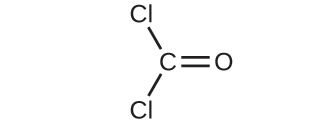
(b)

(c)
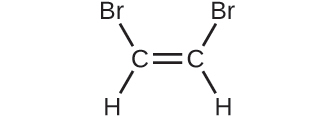
(d)
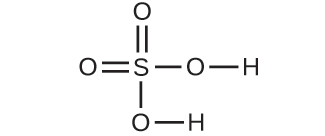
3.5. Determine the molecular mass of the following compounds:
(a)

(b)
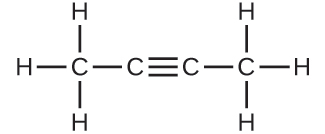
(c)
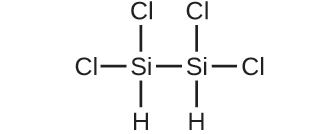
(d)
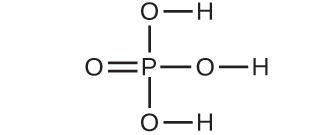
3.6. Which molecule has a molecular mass of 28.05 amu?
(a)

(b)
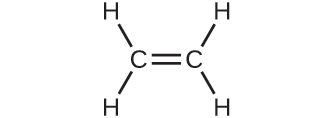
(c)
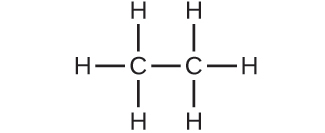
3.7. Write a sentence that describes how to determine the number of moles of a compound in a known mass of the compound using its molecular formula.
3.8. Compare 1 mole of H2, 1 mole of O2, and 1 mole of F2.
(a) Which has the largest number of molecules? Explain why.
(b) Which has the greatest mass? Explain why.
3.9. Which contains the greatest mass of oxygen: 0.75 mol of ethanol (C2H5OH), 0.60 mol of formic acid (HCO2H), or 1.0 mol of water (H2O)? Explain why.
3.10. Which contains the greatest number of moles of oxygen atoms: 1 mol of ethanol (C2H5OH), 1 mol of formic acid (HCO2H), or 1 mol of water (H2O)? Explain why.
3.11. How are the molecular mass and the molar mass of a compound similar and how are they different?
3.12. Calculate the molar mass of each of the following compounds:
(a) hydrogen fluoride, HF
(b) ammonia, NH3
(c) nitric acid, HNO3
(d) silver sulfate, Ag2SO4
(e) boric acid, B(OH)3
3.13.
3.14. Calculate the empirical or molecular formula mass and the molar mass of each of the following minerals:
(a) limestone, CaCO3
(b) halite, NaCl
(c) beryl, Be3Al2Si6O18
(d) malachite, Cu2(OH)2CO3
(e) turquoise, CuAl6(PO4)4(OH)8(H2O)4
3.15. Calculate the molar mass of each of the following:
(a) the anesthetic halothane, C2HBrClF3
(b) the herbicide paraquat, C12H14N2Cl2
(c) caffeine, C8H10N4O2
(d) urea, CO(NH2)2
(e) a typical soap, C17H35CO2Na
3.16. Determine the number of moles of compound and the number of moles of each type of atom in each of the following:
(a) 25.0 g of propylene, C3H6
(b) 3.06 × 10−3 g of the amino acid glycine, C2H5NO2
(c) 25 lbs of the herbicide Treflan, C13H16N2O4F (1 lb = 454 g)
(d) 0.125 kg of the insecticide Paris Green, Cu4(AsO3)2(CH3CO2)2
(e) 325 mg of aspirin, C6H4(CO2H)(CO2CH3)
3.17.
3.18. Determine the number of moles of the compound and determine the number of moles of each type of atom in each of the following:
(a) 2.12 g of potassium bromide, KBr
(b) 0.1488 g of phosphoric acid, H3PO4
(c) 23 kg of calcium carbonate, CaCO3
(d) 78.452 g of aluminum sulfate, Al2(SO4)3
(e) 0.1250 mg of caffeine, C8H10N4O2
3.19.
3.20. The approximate minimum daily dietary requirement of the amino acid leucine, C6H13NO2, is 1.1 g. What is this requirement in moles?
3.21.
3.22. A 55-kg woman has 7.5 × 10−3 mol of hemoglobin (molar mass = 64,456 g/mol) in her blood. How many hemoglobin molecules is this? What is this quantity in grams?
3.23. Determine the number of atoms and the mass of zirconium, silicon, and oxygen found in 0.3384 mol of zircon, ZrSiO4, a semiprecious stone.
3.24. Determine which of the following contains the greatest mass of hydrogen: 1 mol of CH4, 0.6 mol of C6H6, or 0.4 mol of C3H8.
3.25. Determine which of the following contains the greatest mass of aluminum: 122 g of AlPO4, 266 g of Al2Cl6, or 225 g of Al2S3.
3.26. Diamond is one form of elemental carbon. An engagement ring contains a diamond weighing 1.25 carats (1 carat = 200 mg). How many atoms are present in the diamond?
3.27. The Cullinan diamond was the largest natural diamond ever found (January 25, 1905). It weighed 3,104 carats (1 carat = 200 mg). How many carbon atoms were present in the stone?
3.28. One 55-g serving of a particular cereal supplies 270 mg of sodium, 11% of the recommended daily allowance. How many moles and atoms of sodium are in the recommended daily allowance?
3.29. A certain nut crunch cereal contains 11.0 g of sugar (sucrose, C12H22O11) per serving size of 60.0 g. How many servings of this cereal must be eaten to consume 0.0278 moles of sugar?
3.30. A tube of toothpaste contains 0.76 g of sodium monofluorophosphate (Na2PO3F) in 100 mL.
(a) What mass of fluorine atoms in mg was present?
(b) How many fluorine atoms were present?
3.31.
3.2 Determining Empirical and Molecular Formulas
3.32. What information is needed to determine the molecular formula of a compound from the empirical formula?
3.33. Calculate the following to four significant figures:
3.34 . Determine the following to four significant figures:
(a) the percent composition of hydrazoic acid, HN3
(b) the percent composition of TNT, C6H2(CH3)(NO2)3
(c) the percent of SO42– in Al2(SO4)3
3.35.
3.36. Determine the percent water in CuSO4∙5H2O to three significant figures.
3.37. Determine the empirical formulas for compounds with the following percent compositions:
(a) 15.8% carbon and 84.2% sulfur
(b) 40.0% carbon, 6.7% hydrogen, and 53.3% oxygen
3.38. Determine the empirical formulas for compounds with the following percent compositions:
(a) 43.6% phosphorus and 56.4% oxygen
(b) 28.7% K, 1.5% H, 22.8% P, and 47.0% O
3.39. A compound of carbon and hydrogen contains 92.3% C and has a molar mass of 78.1 g/mol. What is its molecular formula?
3.40. Dichloroethane, a compound that is often used for dry cleaning, contains carbon, hydrogen, and chlorine. It has a molar mass of 99 g/mol. Analysis of a sample shows that it contains 24.3% carbon and 4.1% hydrogen. What is its molecular formula?
3.41. Determine the empirical and molecular formula for chrysotile asbestos. Chrysotile has the following percent composition: 28.03% Mg, 21.60% Si, 1.16% H, and 49.21% O. The molar mass for chrysotile is 520.8 g/mol.
3.42. Polymers are large molecules composed of simple units repeated many times. Thus, they often have relatively simple empirical formulas. Calculate the empirical formulas of the following polymers:
(a) Lucite (Plexiglas): 59.9% C, 8.06% H, 32.0% O
(b) Saran: 24.8% C, 2.0% H, 73.1% Cl
(c) polyethylene: 86% C, 14% H
(d) polystyrene: 92.3% C, 7.7% H
(e) Orlon: 67.9% C, 5.70% H, 26.4% N
3.43. A major textile dye manufacturer developed a new yellow dye. The dye has a percent composition of 75.95% C, 17.72% N, and 6.33% H by mass with a molar mass of about 240 g/mol. Determine the molecular formula of the dye.
3.3 Molarity
3.44. Explain what changes and what stays the same when 1.00 L of a solution of NaCl is diluted to 1.80 L.
3.45. What information is needed to calculate the molarity of a sulfuric acid solution?
3.46. A 200-mL sample and a 400-mL sample of a solution of salt have the same molarity. In what ways are the two samples identical? In what ways are these two samples different?
3.47. Determine the molarity for each of the following solutions:
3.48. Determine the molarity of each of the following solutions:
(a) 1.457 mol KCl in 1.500 L of solution
(b) 0.515 g of H2SO4 in 1.00 L of solution
(c) 20.54 g of Al(NO3)3 in 1,575 mL of solution
(d) 2.76 kg of CuSO4·5H2O in 1.45 L of solution
(e) 0.005653 mol of Br2 in 10.00 mL of solution
(f) 0.000889 g of glycine, C2H5NO2, in 1.05 mL of solution
3.49. Consider this question: What is the mass of the solute in 0.500 L of 0.30 M glucose, C6H12O6, used for intravenous injection?
(a) Outline the steps necessary to answer the question.
(b) Answer the question.
3.50. Consider this question: What is the mass of solute in 200.0 L of a 1.556-M solution of KBr?
(a) Outline the steps necessary to answer the question.
(b) Answer the question.
3.51. Calculate the number of moles and the mass of the solute in each of the following solutions:
(a) 2.00 L of 18.5 M H2SO4, concentrated sulfuric acid
(b) 100.0 mL of 3.8 × 10−6 M NaCN, the minimum lethal concentration of sodium cyanide in blood serum
(c) 5.50 L of 13.3 M H2CO, the formaldehyde used to “fix” tissue samples
(d) 325 mL of 1.8 × 10−6 M FeSO4, the minimum concentration of iron sulfate detectable by taste in drinking water
3.52. Calculate the number of moles and the mass of the solute in each of the following solutions:
(a) 325 mL of 8.23 × 10−5 M KI, a source of iodine in the diet
(b) 75.0 mL of 2.2 × 10−5 M H2SO4, a sample of acid rain
(c) 0.2500 L of 0.1135 M K2CrO4, an analytical reagent used in iron assays
(d) 10.5 L of 3.716 M (NH4)2SO4, a liquid fertilizer
3.53. Consider this question: What is the molarity of KMnO4 in a solution of 0.0908 g of KMnO4 in 0.500 L of solution?
(a) Outline the steps necessary to answer the question.
(b) Answer the question.
3.54. Consider this question: What is the molarity of HCl if 35.23 mL of a solution of HCl containing 0.3366 g of HCl?
(a) Outline the steps necessary to answer the question.
(b) Answer the question.
3.55. Calculate the molarity of each of the following solutions:
(a) 0.195 g of cholesterol, C27H46O, in 0.100 L of serum, the average concentration of cholesterol in human serum
(b) 4.25 g of NH3 in 0.500 L of solution, the concentration of NH3 in household ammonia
(c) 1.49 kg of isopropyl alcohol, C3H7OH, in 2.50 L of solution, the concentration of isopropyl alcohol in rubbing alcohol
(d) 0.029 g of I2 in 0.100 L of solution, the solubility of I2 in water at 20°C
3.56. Calculate the molarity of each of the following solutions:
(a) 293 g HCl in 666 mL of solution, a concentrated HCl solution
(b) 2.026 g FeCl3 in 0.1250 L of a solution used as an unknown in general chemistry laboratories
(c) 0.001 mg Cd2+ in 0.100 L, the maximum permissible concentration of cadmium in drinking water
(d) 0.0079 g C7H5SNO3 in one ounce (29.6 mL), the concentration of saccharin in a diet soft drink.
3.57.
3.58. What volume of a 1.00 M Fe(NO3)3 solution can be diluted to prepare 1.00 L of a solution with a concentration of 0.250 M?
3.59.
3.60. If 4.12 L of a 0.850 M H3PO4 solution is be diluted to a volume of 10.00 L, what is the concentration of the resulting solution?
3.61.
3.62. What is the concentration of the NaCl solution that results when 0.150 L of a 0.556-M solution is allowed to evaporate until the volume is reduced to 0.105 L?
3.63. What is the molarity of the diluted solution when each of the following solutions is diluted to the given final volume?
3.64. What is the final concentration of the solution produced when 225.5 mL of a 0.09988-M solution of Na2CO3 is allowed to evaporate until the solution volume is reduced to 45.00 mL?
3.65.
3.66. An experiment in a general chemistry laboratory calls for a 2.00-M solution of HCl. How many mL of 11.9 M HCl would be required to make 250 mL of 2.00 M HCl?
3.67.
3.68. The U.S. Environmental Protection Agency (EPA) places limits on the quantities of toxic substances that may be discharged into the sewer system. Limits have been established for a variety of substances, including hexavalent chromium, which is limited to 0.50 mg/L. If an industry is discharging hexavalent chromium as potassium dichromate (K2Cr2O7), what is the maximum permissible molarity of that substance?
Cumulative
3.69. You are trying to clean a 250 mL Erlenmeyer flask which contained a 0.15 M solution. Assume each time the flask is emptied, 1.2 mL of liquid remains in the flaks.
(a) Calculate the concentration of solution remaining if the flask is rinsed once with 50 mL water.
(b) Calculate the concentration of solution remaining if the flask is rinsed with 10 mL water five times.
(c) Is washing once with a larger volume of water or many times with smaller volumes of water a more effective way to clean glassware?
3.70. The average human weighs 62 kg (140 lbs).
(a) If the human body is roughly 60% water, how many moles of water does an average body contain?
(b) The lethal dose of caffeine (C8H10N4O2) is roughly 150 mg/kg of body weight. How much caffeine (in g) would an average person need to consume to reach this dose?
(c) How many moles of caffeine are in the answer to part b? How many molecules? How many atoms?
(d) If there is 12 mg caffeine per ounce of coffee, how many cups of coffee must be consumed to reach the dose in part c? One cup is exactly 8 oz.
3.71. Dr. Rebecca Abergel, a chemist working at Lawrence Berkeley National Laboratory in Berkeley, California, studies lanthanides and actinides. Her research group is trying to develop treatments for exposure to these elements, which are radioactive. Go to https://vcresearch.berkeley.edu/faculty/rebecca-abergel to learn more about Dr. Abergel and to https://abergel.lbl.gov/research/ to learn more about her research.
(a) Where are the lanthanides and actinides located on the periodic table?
(b) One of the radioactive elements she is studying is einsteinium-254 (III) ion (Es). Give the symbol for this isotope.
(c) Determine the number of subatomic particles einsteinium-254 (III) ion has.
(d) Due to their instability, radioactive elements must be synthesized in nuclear reactors. This makes them rare commodities. One of the samples Dr. Abergel obtained for her research contained less than 250 ng[1] of einsteinium-254 (254.09 g/mol). Calculate the moles and number of atoms that were in the sample.
(e) Einsteinium-254 has a half-life of 276 days. This means that of the initial 250 ng, 4 × 1013 atoms decomposed into another element in the first month. How many atoms of einsteinium-254 remained after a month?[1]
3.72. Dr. Bil Clemons is a professor of biochemistry at Caltech. He studies the structures of integral membrane proteins. http://clemonslab.caltech.edu/research.html
(a) From what institution did Dr. Clemons receive his doctoral degree (PhD)? http://clemonslab.caltech.edu/people.html
(b) In order to study these proteins, they must first be separated from the many other proteins and other molecules that are present in cells. This requires the use of complex buffer solutions. One such example is a solution that is 20 mM Tris (121.14 g/mol), 0.15 M NaCl, 25 mM imidazole (60.08 g/mol) and 10 mM BME (78.13 g/mol). Calculate the masses of each compound needed to prepare 750 mL of the buffer.
(c) One assay his research group performed required 2 mM ATP. If they used 10 mM stock solution of ATP, how much of the stock solution would be needed for a 1,000-mL assay?
3.73. When 4.69 g of sulfur combines with fluorine, 15.81 g of gas is produced.
(a) What is the empirical formula of the gas?
(b) Assuming that the empirical and molecular formulas are the same, name the gas.
3.74. A solution prepared by dissolving 42.0 g KOH in 208 g water has a density of 1.14 g/mL.
(a) What is the concentration of KOH?
(b) What is the concentration of water?
3.75. In homeopathy, medicinal substances are repeatedly diluted with alcohol or water. In the “centesimal” or “C scale,” substances are diluted by a factor of 100. In other words, 1 mL of solution is diluted to 100 mL. Samples that are 1C undergoes the 100 times dilution once; 2C substances undergoes the dilution twice; and so on. Examples of such homeopathic substances are shown to the right.
(a) Starting with a 1 M solution, calculate the molarities of a samples that are 1C, 2C, 3C and 30C.
(b) For the 30C solution from part a, calculate the number of molecules in 1 L of the solution.
3.76. What mass of nickel (II) chlorate is needed to prepare 500.00 mL of 0.72 M solution?
- Chang, K. (2021, February 7). Einsteinium is mysterious. Scientists have unlocked some of its secrets. The New York Times. ↵
